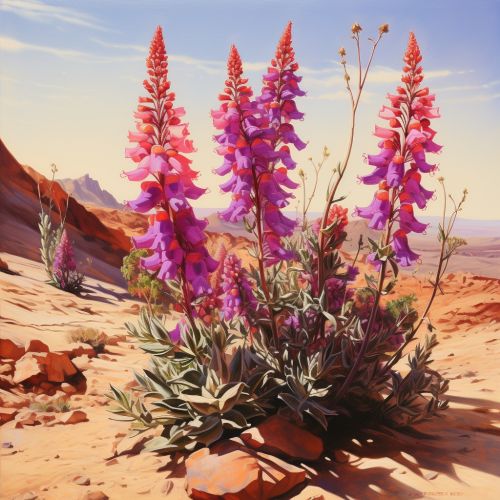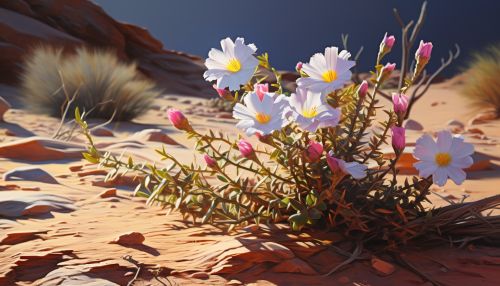Ephemeral plants
Introduction
Ephemeral plants, also known as ephemerals, are a type of plant species that have a specific life cycle adapted to extreme environmental conditions. These plants are characterized by their short life cycle, which is typically completed within a single growing season. They are predominantly found in arid or semi-arid regions, such as deserts, where they take advantage of the brief periods of rainfall to germinate, grow, flower, and set seed before the dry conditions return.


Life Cycle
The life cycle of ephemeral plants is unique and highly adapted to their harsh living conditions. The cycle begins with the germination of seeds, which is triggered by the onset of rainfall. The plants then grow rapidly, taking advantage of the temporary availability of water and nutrients in the soil. This rapid growth phase is followed by flowering and seed production, which are completed before the return of dry conditions. The parent plant then dies off, leaving behind a new generation of seeds that lie dormant in the soil until the next rainfall event.
Adaptations
Ephemeral plants have developed a number of specialized adaptations to survive in their harsh environments. These include:
- Drought Tolerance: Ephemeral plants have the ability to withstand periods of extreme drought. This is achieved through a variety of mechanisms, such as the production of drought-resistant seeds, the ability to store water in their tissues, and the development of deep root systems that can access water from deep within the soil.
- Rapid Growth: Ephemeral plants are capable of extremely rapid growth. This allows them to complete their life cycle during the brief periods of rainfall in their native habitats.
- Seed Dormancy: The seeds of ephemeral plants are able to remain dormant in the soil for extended periods of time, often for several years. This allows them to survive through prolonged periods of drought until conditions are favorable for germination.
Distribution and Habitat
Ephemeral plants are found in a variety of habitats around the world, but they are most commonly associated with arid and semi-arid regions. These include deserts, such as the Mojave and Sahara, as well as other dry habitats like the Outback of Australia and the Kalahari in southern Africa. However, ephemeral plants can also be found in other habitats where conditions are temporarily favorable for growth, such as vernal pools and alpine meadows.
Examples of Ephemeral Plants
There are many different species of ephemeral plants, each with its own unique adaptations and life cycle. Some examples include:
- Desert Mariposa Lily: This plant, native to the deserts of southwestern North America, produces large, showy flowers after periods of rainfall. Its seeds can remain dormant in the soil for several years until conditions are right for germination.
- Desert Sand Verbena: Found in the deserts of western North America, this plant produces a carpet of purple flowers after rainfall events. It has a deep root system that allows it to access water from deep within the soil.
- Woolly Daisy: This plant, native to the deserts of Australia, has a dense covering of woolly hairs that help to conserve water. It produces bright yellow flowers after periods of rainfall.
Conservation and Threats
Ephemeral plants, like many other plant species, are threatened by a variety of factors. These include habitat loss due to urban development, climate change, and invasive species. Conservation efforts for ephemeral plants typically focus on habitat preservation and the control of invasive species.
